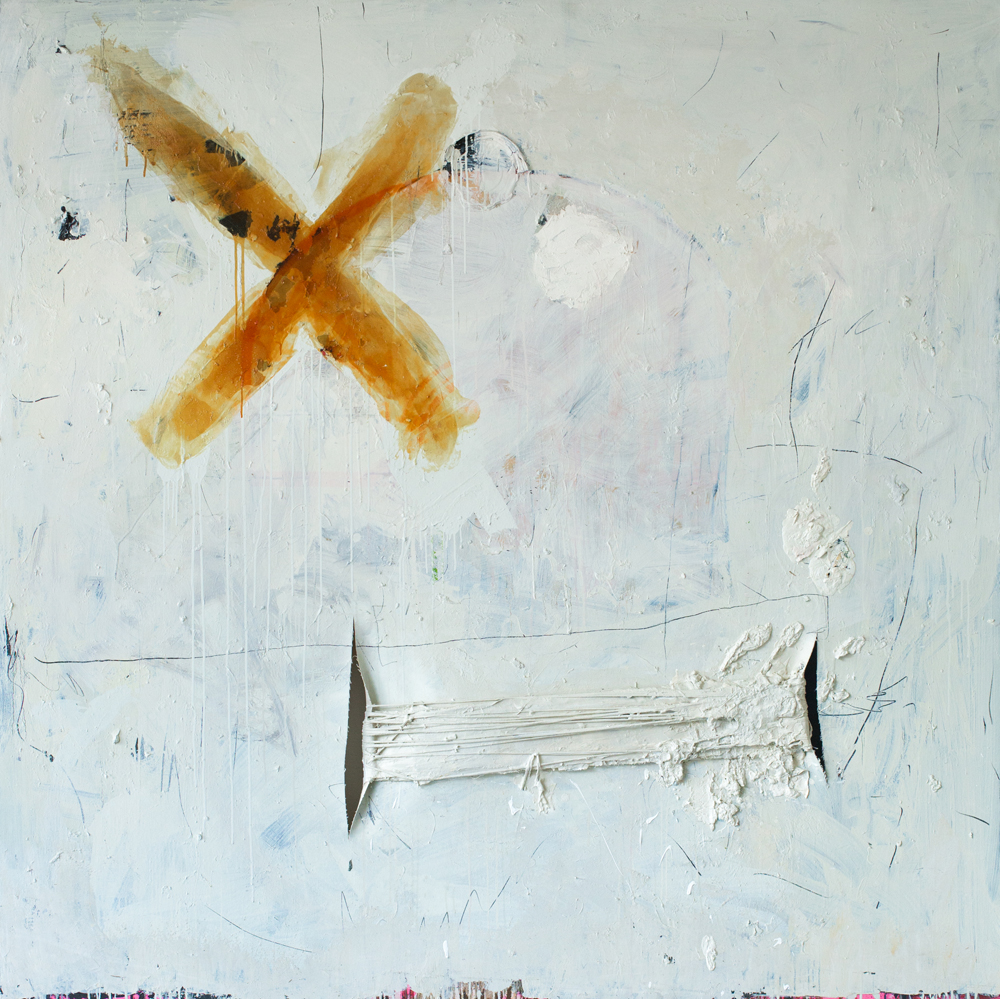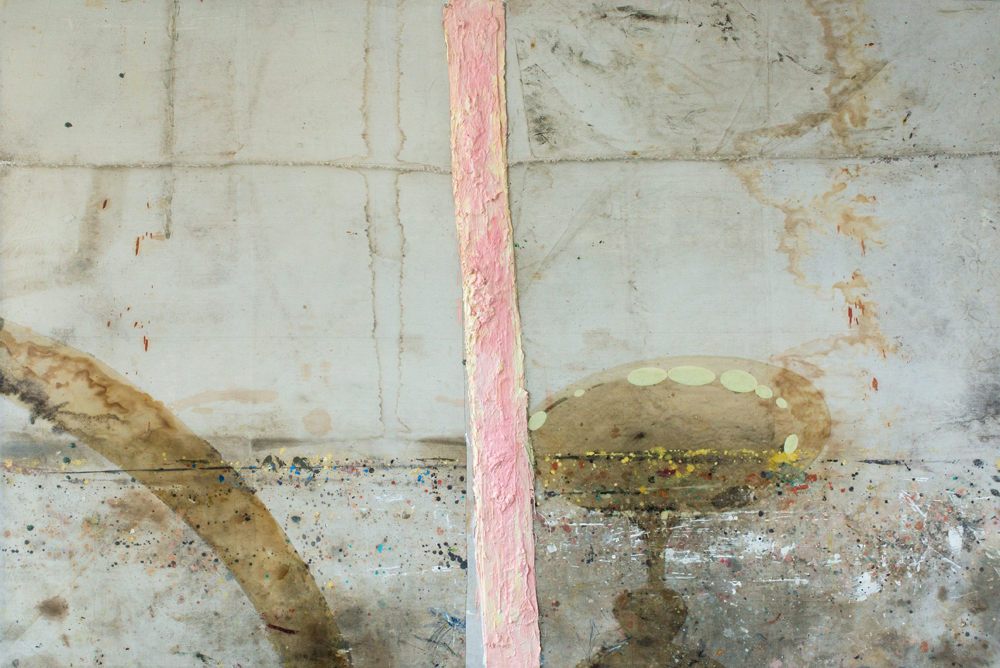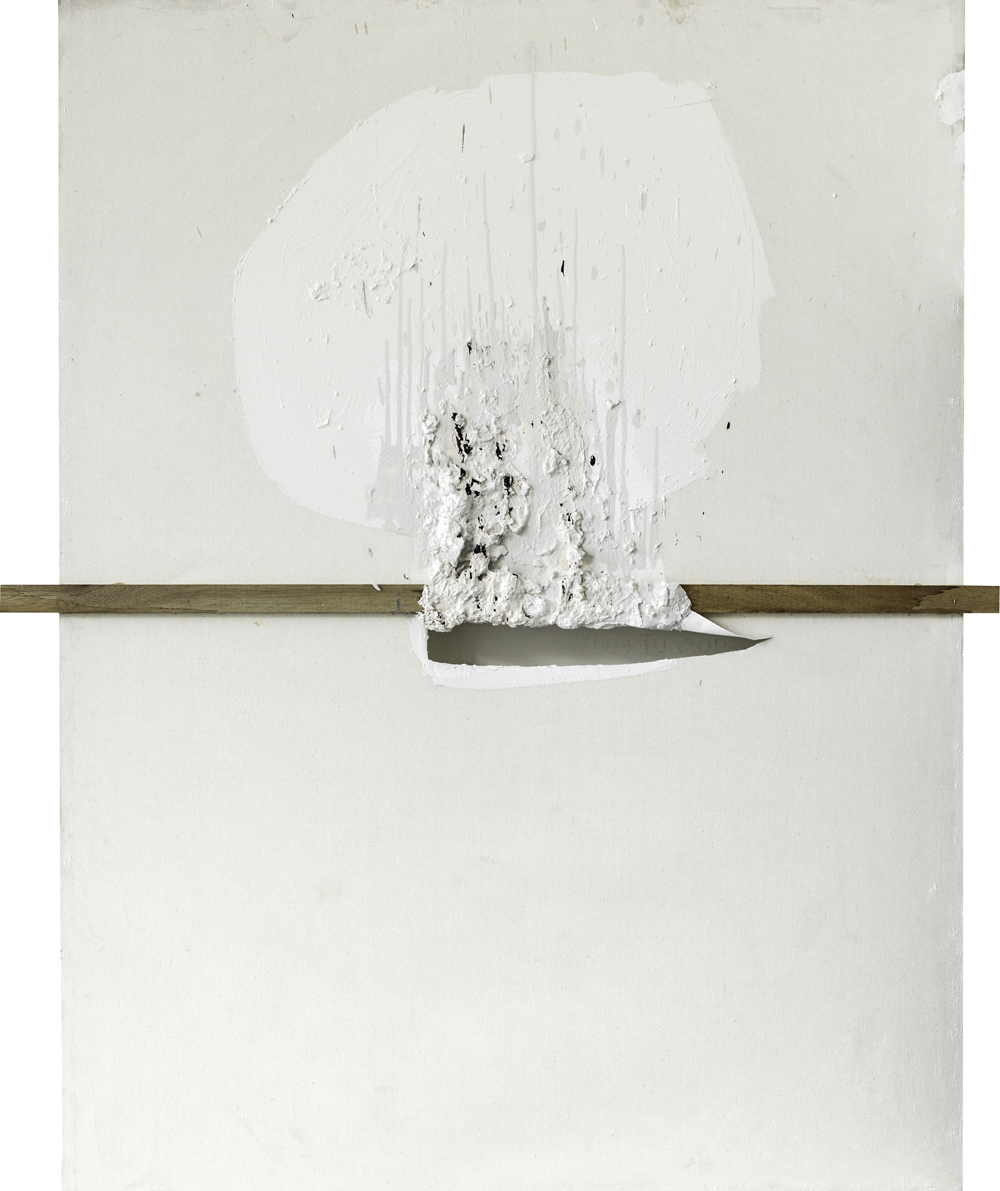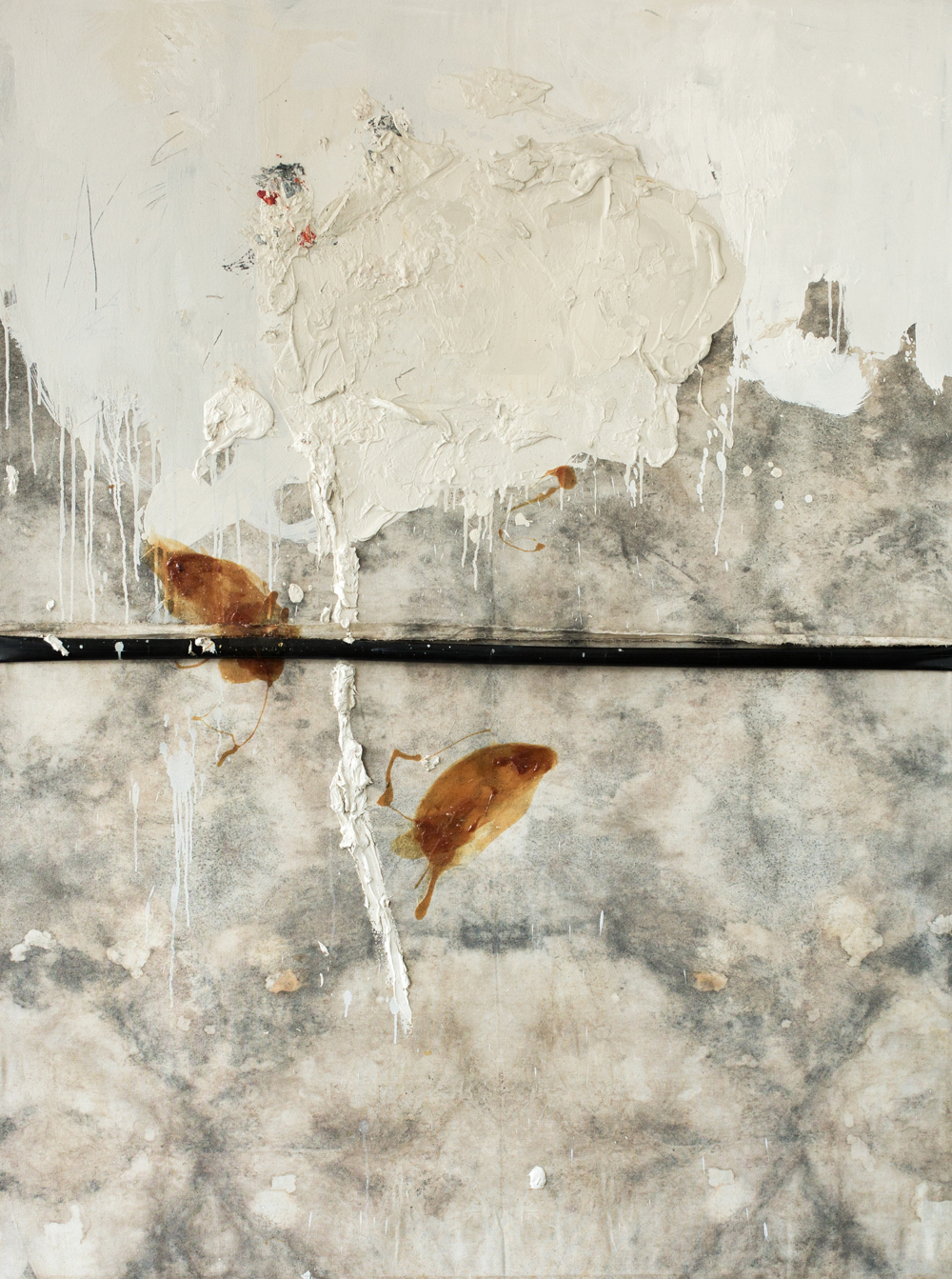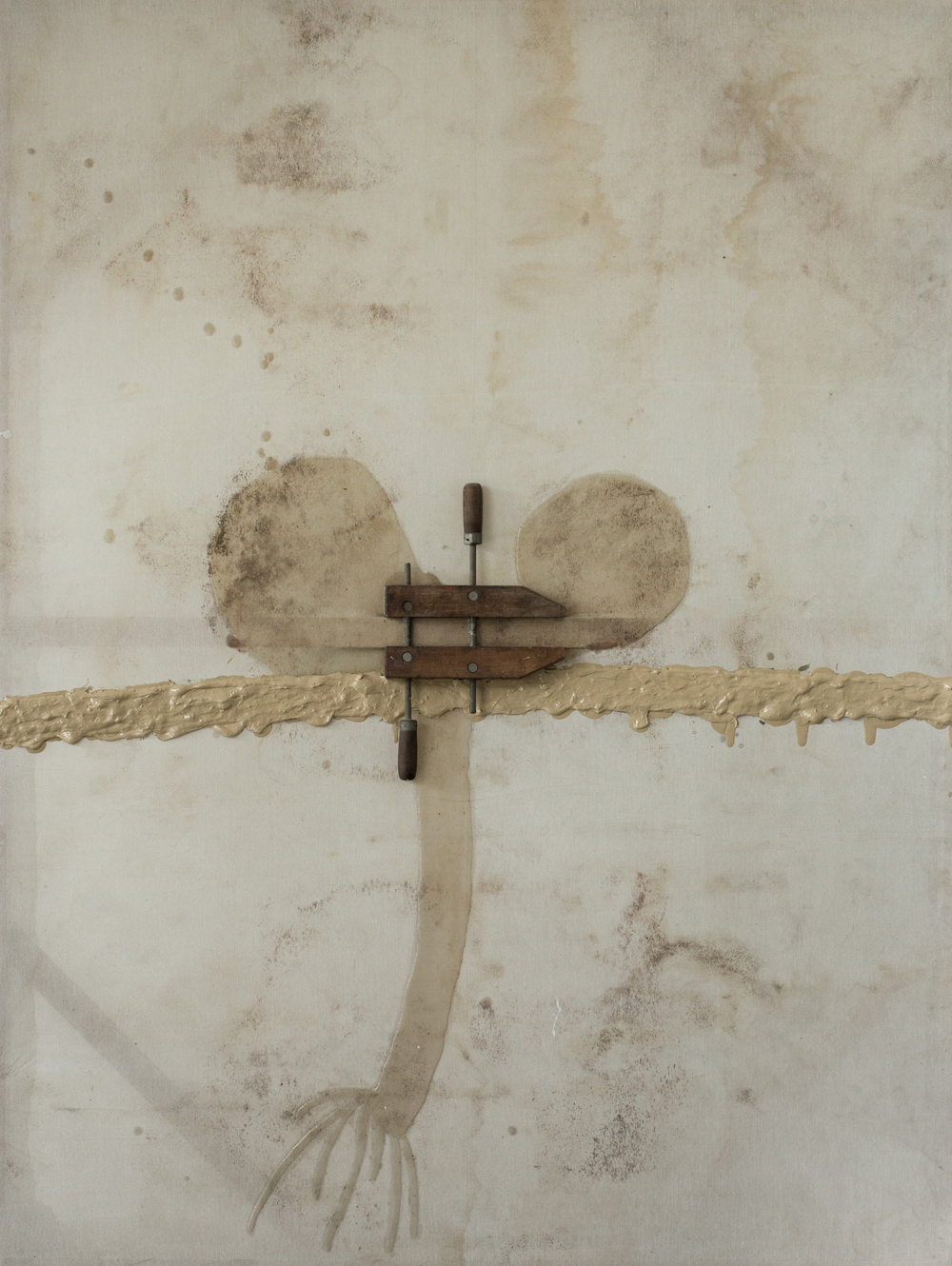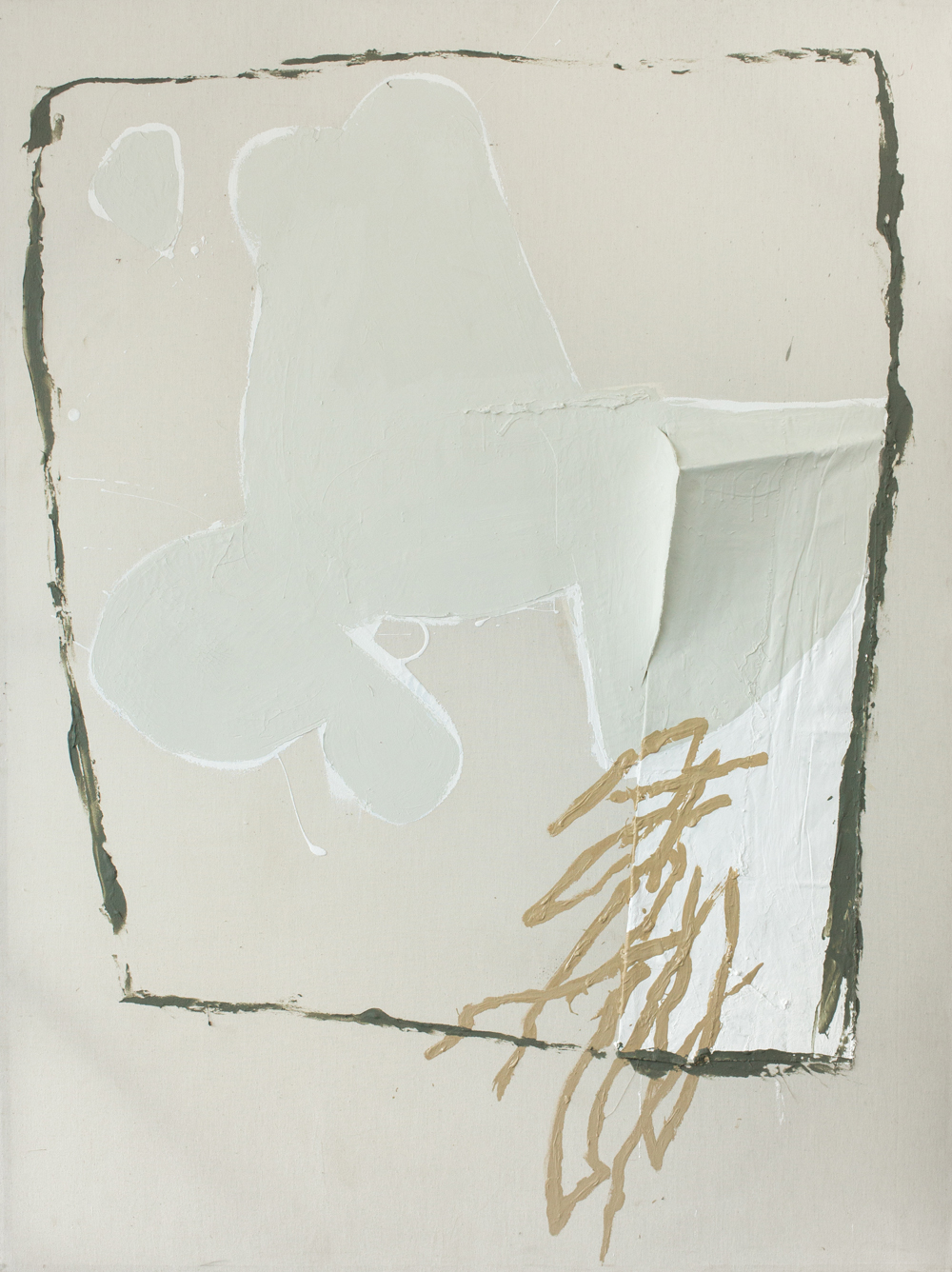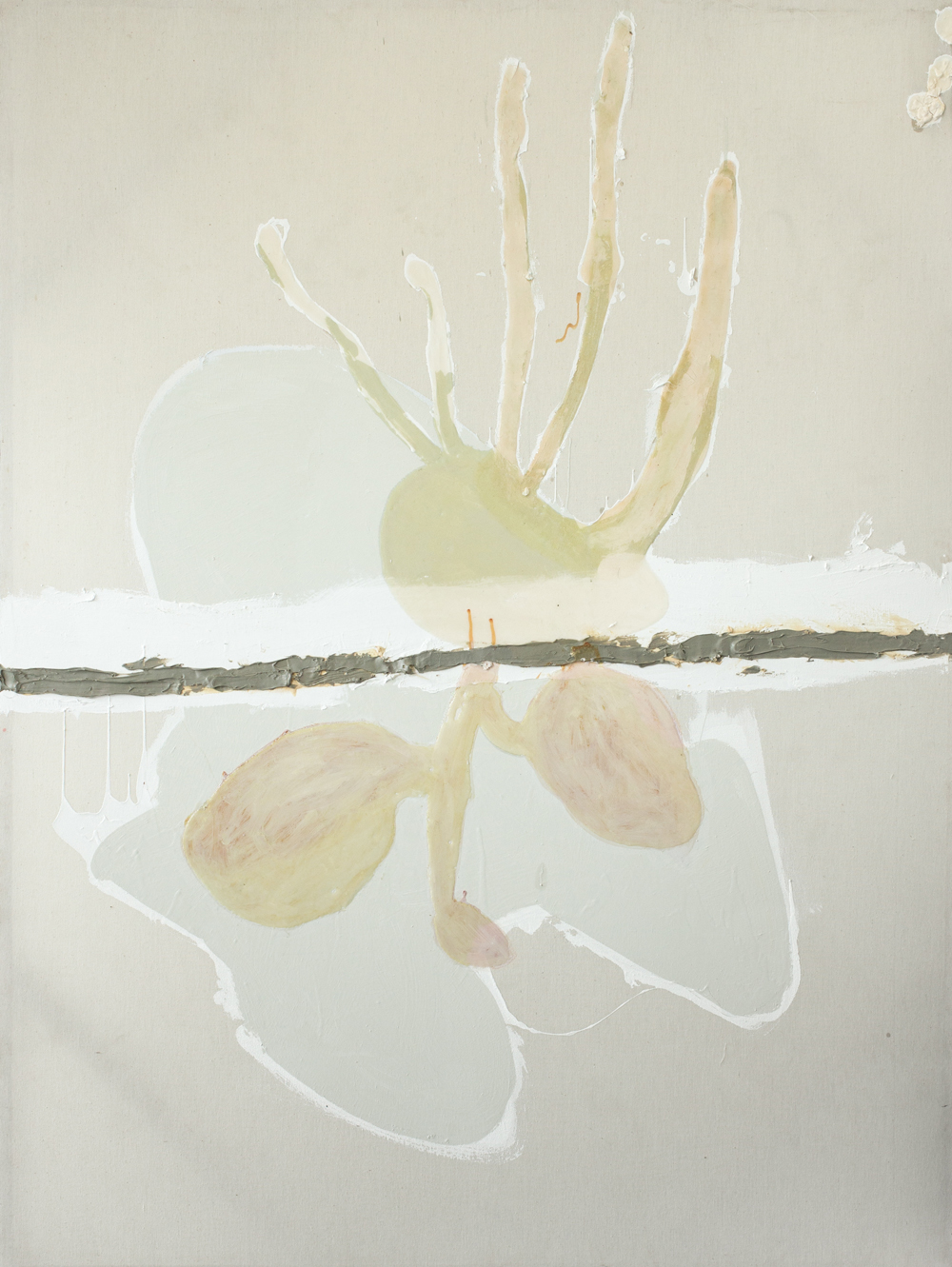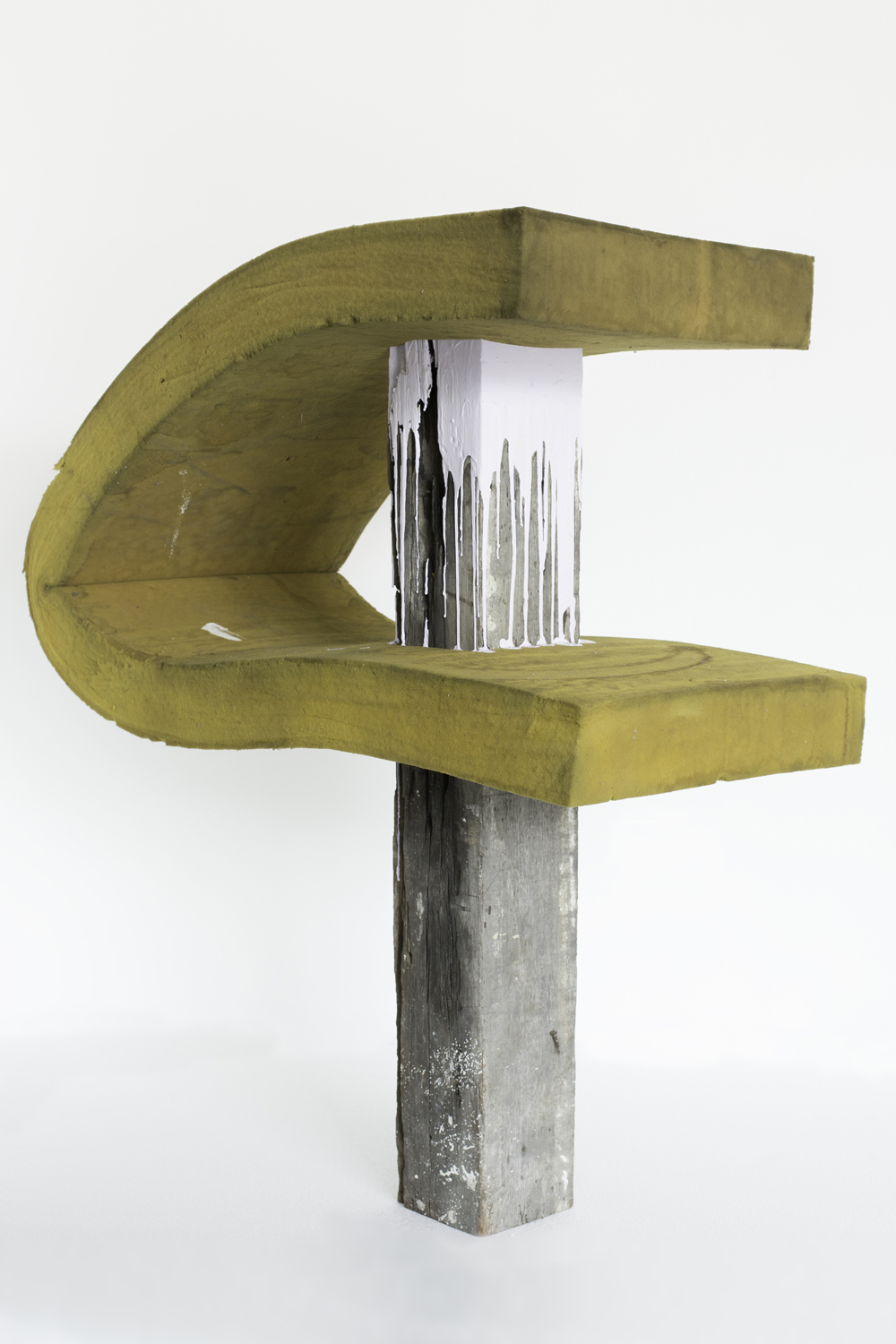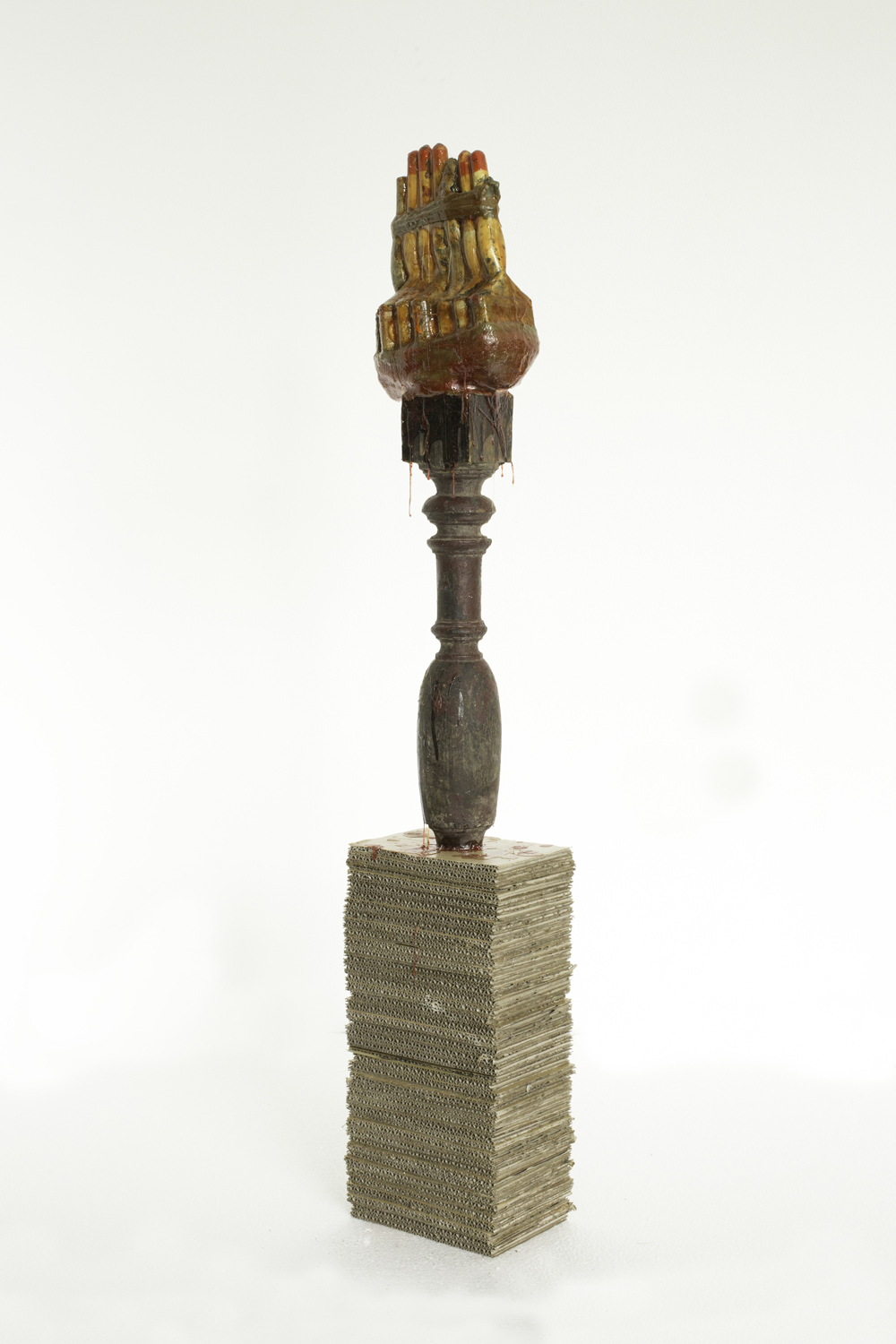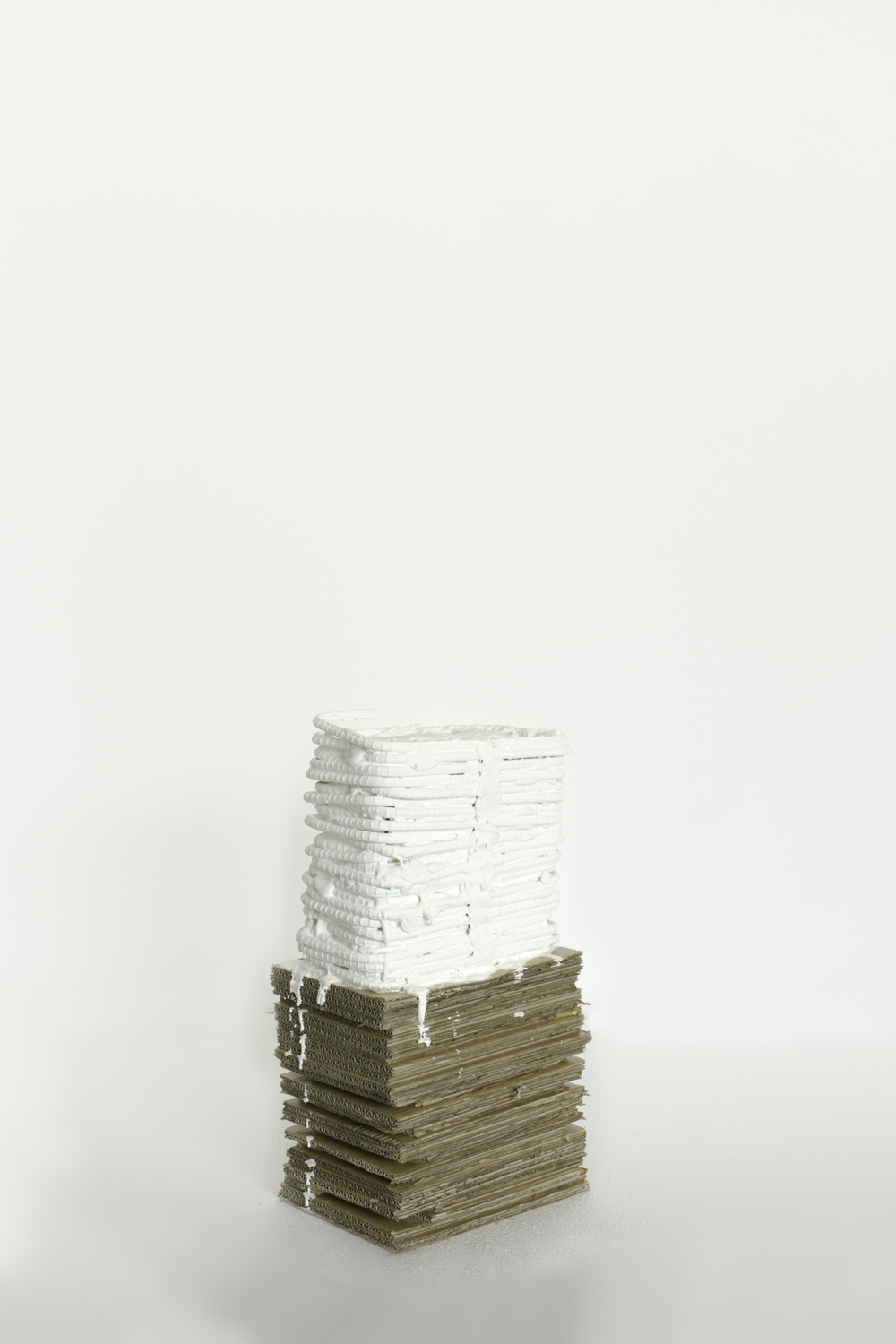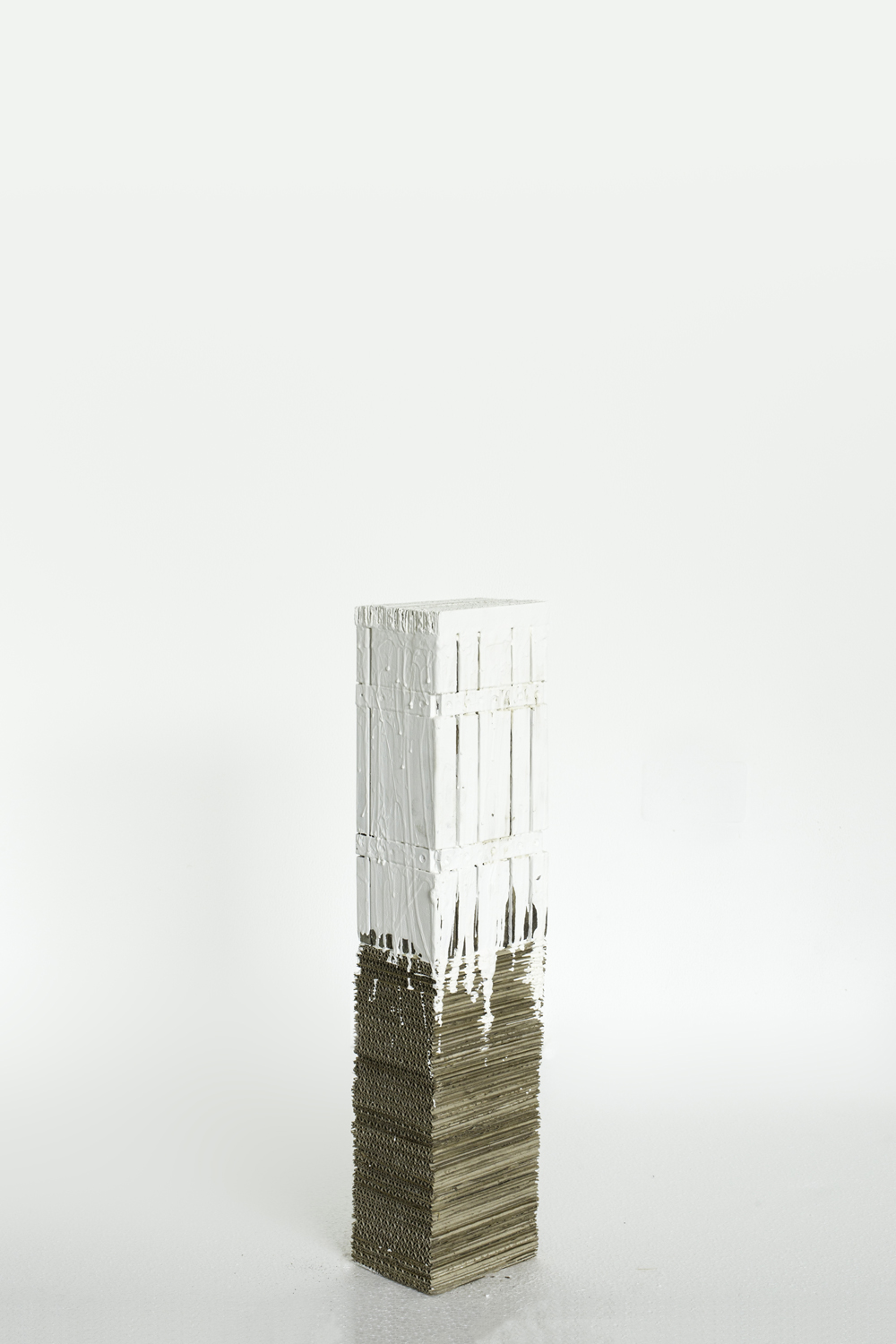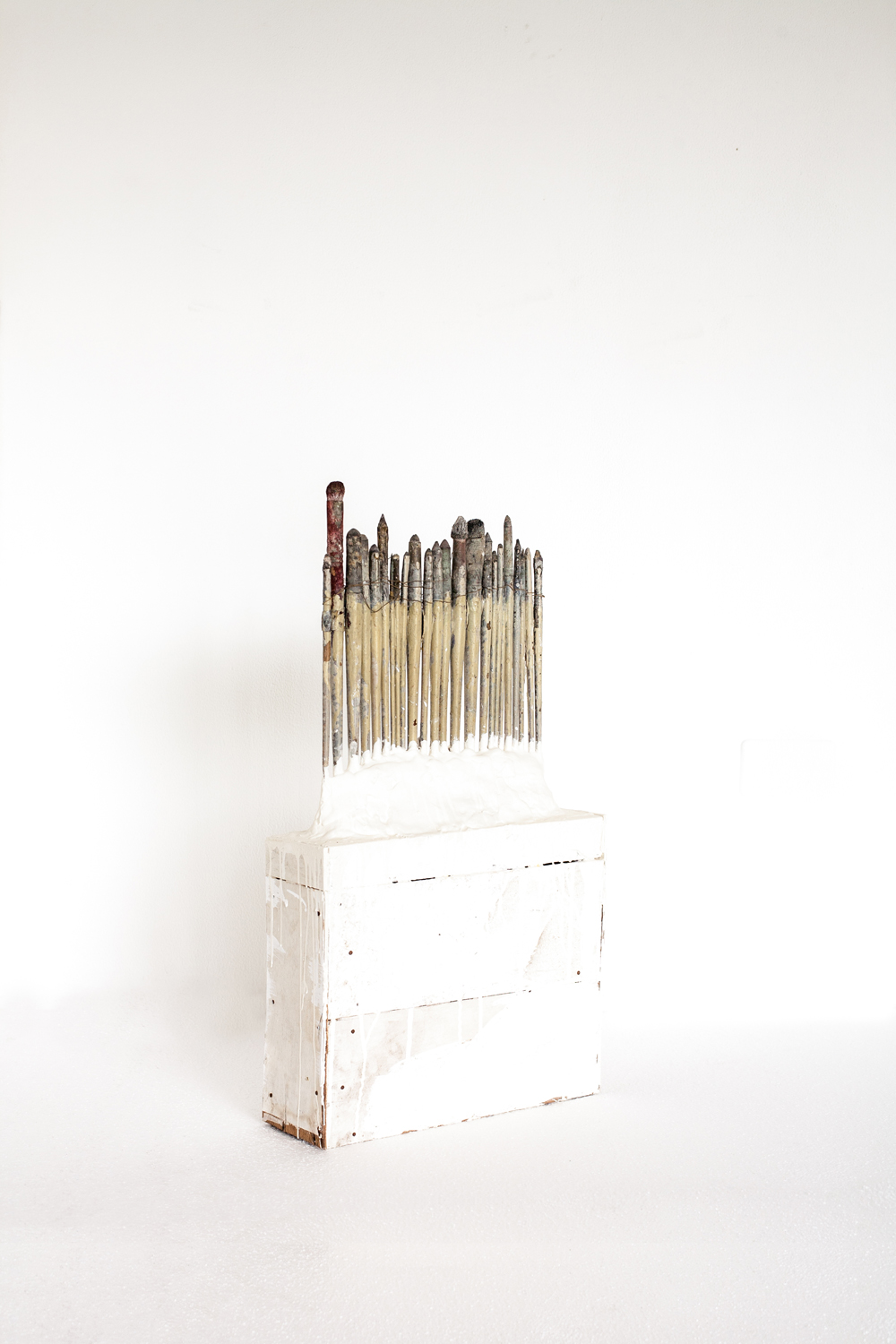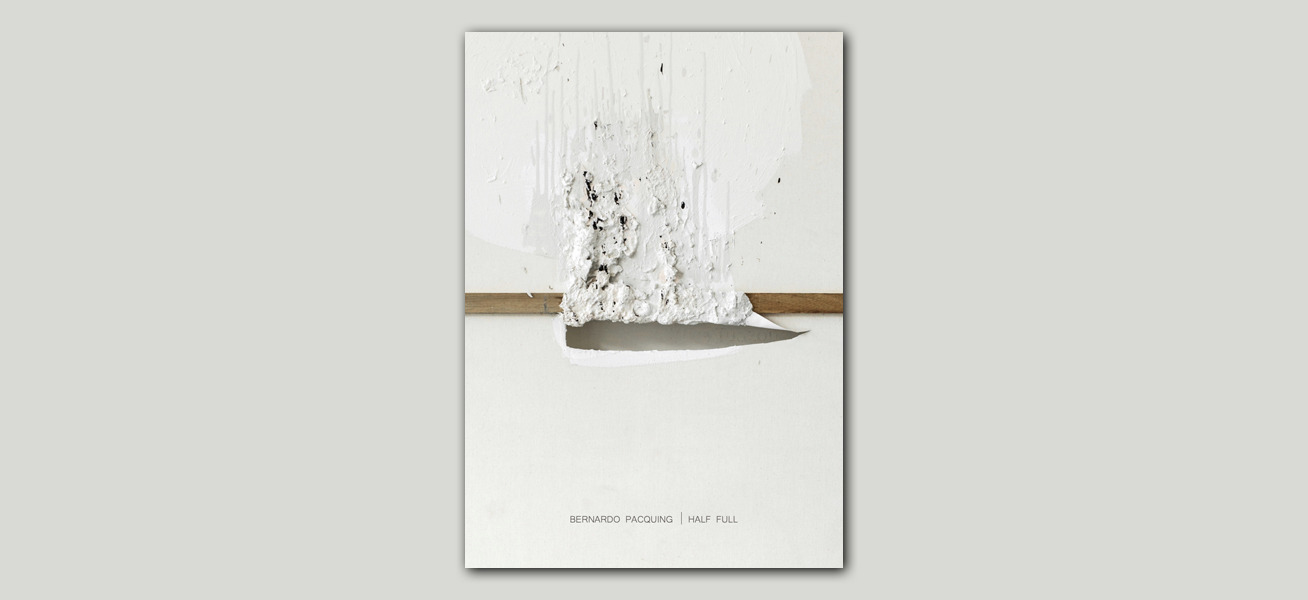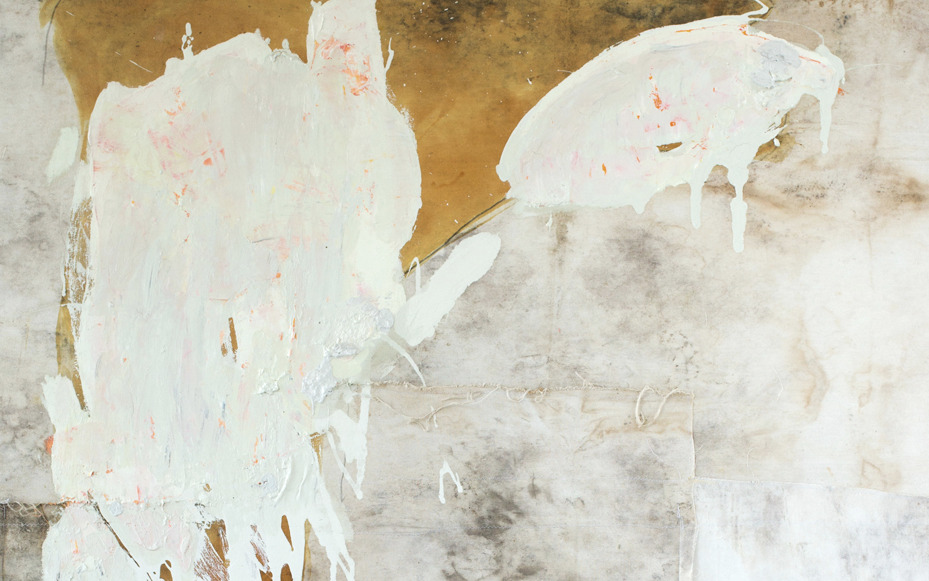
Half Full
Bernardo Pacquing
Silverlens, Manila
About
Silverlens is pleased to present Half Full, Bernardo Pacquing’s latest one-man exhibition of mixed media paintings and sculptures that delves into the materiality of everyday media. The artist distills into aesthetic encounters the sensate experience of quiet observation and work: making and growing things from the simplest of elements. The exhibition explores this period of flux in between: the transitional phase where seeds sprout into growths, where cells build up into more complex forms.
Pacquing started working on this series after learning hydroponics—cultivating plants sans the presence of soil—patiently building and maintaining a system of pipes and pumps at home to support their growth. The resulting works are abstractions of these found forms, denoting the cycle of the water and pipe system essential to producing and maintaining life. Horizontal shapes and marks are transversed by organic forms and textures: their linearity and textures capturing the process of growth and flow. The final compositions, seemingly spontaneous in execution, are in fact products of quiet deliberation, waiting and exploration.
The resulting series of works is named after edible plants and vegetables grown from the process; individual canvases are titled using their common and scientific names. Pacquing’s use of abstraction, however, eschews any semblance of fidelity to botanical forms; instead, one can perceive indirect references to the plant itself by the way Pacquing wields elements of color, texture and line as part of his compositions.
The exhibition is also Pacquing’s first time to use raw, unprimed canvas as an essential component of his works. Here, the artist turns his attention to canvas cloths discarded in the process of making art: the discarded siblings of countless masterpieces and works. Used as supports or background supports, the pieces are often exposed to the elements, dirt, and grub—bearing stains and scars of the whole process. These are salvaged and infused with new life in the series, used as both material and image for Pacquing’s paintings. He also treats canvas as a sculptural space in some works: ripping and tearing through some parts and sewing up others to create plays between positive and negative space.
Thus, the resulting paintings in Half Full are more sculptural than gestural in treatment. Pacquing’s visual fascination with the rawness of surfaces and experimentation with different mixed media is especially evident in this series. Most of these materials are encountered in the context of everyday carpentry and household maintenance, such as elastomeric, resins, house paints, rugby, and wood glue. The artist mixes most of these with oil or various binders, creating new translucent or textured layers in the process.
Nevertheless, the paintings seem to be suffused with a sense of stillness, employing a restrained and nuanced palette of hues. The resulting forms and colors connote the surfaces of stem, tubing and sunlit walls or the sheen of stilled liquid, accumulating in drops and pools.
Similarly, his series of sculptural forms, standing alone like outposts or vertical markers, are also made from the juxtaposition of hybrid and discarded media. Here, light cardboard discards are cut and stacked as bases and attached to antique balustrades, foam mattresses, and brushes. Like isolated shoots, weeds or growths popping out of the gallery’s concrete floor—set apart from the carefully cultivated crops denoted by his series of paintings—their presence seems to underscore the destabilising and diversifying potential of the unexpected.
The exhibition’s title—Half Full—in a literary sense, also pertains to metaphorical ways of seeing the world: to seek dignity and merit in things, images or experiences easily dismissed and discarded, and to find contentment in these little, passing moments of being. As an ongoing series, Pacquing’s explorations of botanical abstraction beguile and speak to both mind and spirit.
Words by Lisa Ito
Bernardo Pacquing (b. 1967, Tarlac) has continually worked in abstraction and non-representation, exploring the physicality of surfaces and the material minutiae of urban life through painting and sculptural forms.
Pacquing was twice declared a winner of the Grand Prize for the Art Association of the Philippines Open Art Competition (Painting, Non-Representation) in 1992 and 1999, and is a recipient of the Cultural Center of the Philippines Thirteen Artists Award in 2000. He received a Freeman Fellowship Grant for a residency at the Vermont Studio Center in the United States. Pacquing graduated from the University of the Philippines College of Fine Arts in 1989.
Works
